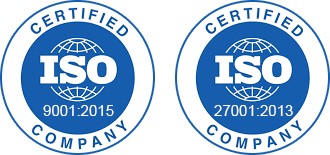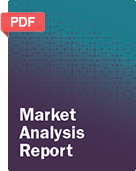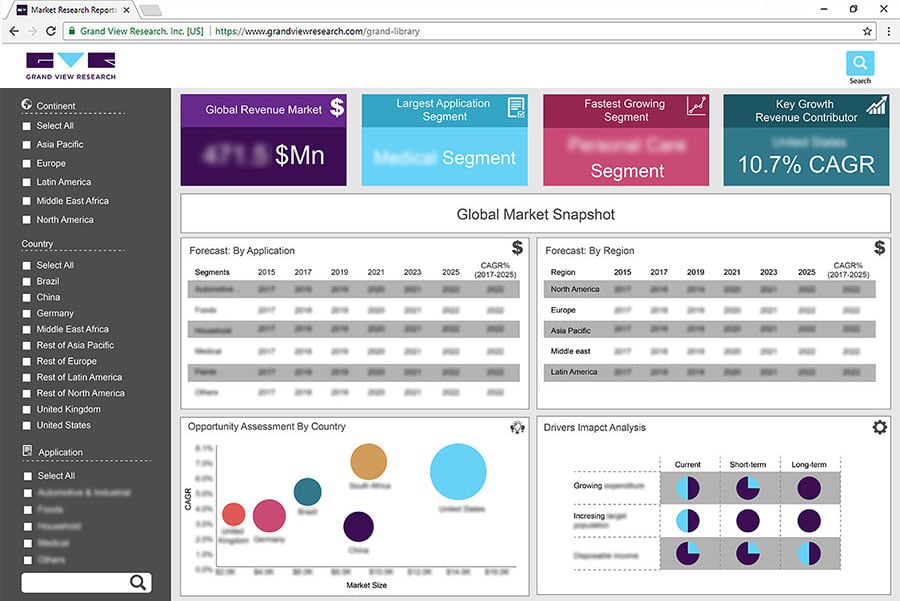- Home
- »
- Clinical Diagnostics
- »
-
Hematology Diagnostics Market Size & Share Report, 2030GVR Report cover
![Hematology Diagnostics Market Size, Share & Trends Report]()
Hematology Diagnostics Market Size, Share & Trends Analysis Report By Product, By Test (Blood Count, Platelet Function, Hemoglobin, Hematocrit), By End Use, By Region, And Segment Forecasts, 2024 - 2030
- Report ID: GVR-2-68038-660-8
- Number of Report Pages: 100
- Format: PDF, Horizon Databook
- Historical Range: 2018 - 2022
- Forecast Period: 2024 - 2030
- Industry: Healthcare
Market Size & Trends
The global hematology diagnostics market size was valued at USD 7.54 billion in 2023 and is projected to grow at a CAGR of 6.5% from 2024 to 2030. The increasing prevalence of blood disorders and hematologic malignancies, such as anemia, leukemia, lymphoma, and myeloma, is a primary driver. These conditions necessitate accurate and timely diagnostic procedures, which hematology diagnostics can provide. Early detection and precise diagnosis are crucial for effectively treating and managing these disorders, leading to a heightened need for advanced diagnostic tools.

Technological advancements in diagnostic equipment and techniques have also significantly increased demand. Innovations such as automated analyzers, flow cytometry, and molecular diagnostics have improved hematology tests' accuracy, efficiency, and range. These advancements make it easier for healthcare providers to diagnose complex conditions and tailor treatments to individual patients, further driving the adoption of these technologies. Additionally, there is a growing emphasis on preventive healthcare and routine health check-ups. This shift in healthcare practices has led to more frequent use of hematology diagnostics to monitor general health and detect early signs of potential issues. Public health initiatives and awareness campaigns also encourage individuals to undergo regular screenings, contributing to the overall increase in demand.
Increasing healthcare infrastructure in emerging economies makes hematology diagnostics more accessible. Governments and private entities are investing in modern healthcare facilities, which include advanced diagnostic laboratories. This expansion improves access to quality healthcare and drives the adoption of state-of-the-art diagnostic technologies, meeting the rising demand for comprehensive blood analysis and monitoring.
Product Insights
The consumable segment held the largest market revenue share at 65.9% in 2023. The growing occurrence of hematological disorders, such as anemia and leukemia, requires regular diagnostic tests. Ongoing advancements in diagnostic technologies necessitate specialized consumables, including reagents and stains, to guarantee precise and practical testing. Moreover, increased knowledge about blood disorders and the significance of early detection results in increased testing numbers. A growing worldwide population of aged individuals, more vulnerable to blood-related problems, is driving up the need for these tests. In addition, advancements in healthcare facilities, particularly in underdeveloped nations, are making it easier to utilize advanced diagnostic equipment and supplies.
The instrument segment is projected to witness a significant CAGR over the forecast period. Technological advances in diagnostic tools, such as automated hematology analyzers and flow cytometers, are boosting the growth of the instrument segment in the hematology diagnostics market, improving accuracy and efficiency. The rising occurrence of blood disorders such as anemia and leukemia require more sophisticated tools for accurate detection and monitoring. Furthermore, the shift towards automation in labs enhances dependability and speed, and the increasing use of point-of-care testing demands portable and user-friendly diagnostic devices.
End Use Insights
The hospitals segment held the largest market revenue share in 2023. Hospitals are increasingly becoming primary centers for complex and advanced diagnostic procedures, including those related to blood disorders. Hospitals often have access to the latest diagnostic technologies and a higher concentration of specialized healthcare professionals. The integration of advanced diagnostic equipment, coupled with the growing focus on early disease detection and management, further boosts the demand in this segment.
The diagnostics labs segment is projected to grow at the fastest CAGR over the forecast period. The increasing demand for diagnostic labs in the hematology diagnostics market is driven by a growing prevalence of hematologic conditions such as anemia, leukemia, and lymphomas, requiring specialized and precise diagnosis and management testing. Innovations in diagnostic technologies, like advanced hematology analyzers and next-generation sequencing, enable more accurate and rapid identification of blood disorders, encouraging healthcare providers to rely more on laboratory services. Additionally, patients' awareness about the importance of regular health check-ups and early detection is rising, prompting more people to utilize diagnostic labs. This trend is further supported by expanding healthcare infrastructure and comprehensive insurance coverage, making diagnostic services more accessible and affordable.
Test Insights
The blood count segment dominated the market in 2023. The rising chronic diseases, such as cardiovascular diseases and diabetes, often require regular blood parameters monitoring, including complete blood count (CBC) tests. Advancements in point-of-care testing (POCT) technologies have made blood count tests more accessible and quicker, enabling immediate clinical decisions in emergency and outpatient settings. Another significant driver is expanding healthcare infrastructure in emerging markets, where increased access to diagnostic services leads to higher blood count tests.

Platelet function segment is projected to grow at the fastest CAGR over the forecast period. Advanced diagnostic tools are in high demand due to the rising prevalence of hematological disorders such as thrombocytopenia and hemophilia. Advances in technology, such as point-of-care testing and wearable monitoring devices, have greatly enhanced the precision and effectiveness of platelet function tests. Increased awareness and extensive screening initiatives have increased the need, as old-age individuals worldwide, who are more prone to blood disorders, also contribute to the requirement for comprehensive diagnostic solutions.
Regional Insights
North America held the largest market revenue share of 45.2% in 2023. The region's aging population is a significant driver, as older adults are more prone to blood disorders necessitating regular diagnostic testing. Moreover, North America has a high prevalence of chronic diseases such as diabetes and cancer, which often require hematological assessments for management and treatment monitoring. The robust healthcare infrastructure and widespread availability of advanced diagnostic technologies in this region also play a crucial role, enabling more precise and rapid testing.

U.S. Hematology Diagnostics Market Trends
The U.S. held the largest market revenue share regionally. The prevalence of chronic diseases such as diabetes, heart disease, and obesity in the U.S. amplifies the need for routine hematology diagnostics to monitor complications such as diabetic retinopathy and cardiovascular risks. The robust healthcare infrastructure, including advanced laboratories and widespread access to medical facilities, supports the growing demand for these diagnostic services.
Europe Hematology Diagnostics Market Trends
Europe market was witnessed as lucrative in this industry. The expansion of national healthcare programs that prioritize early disease detection and preventive care leads to increased screening and diagnostic activities. Additionally, Europe's strong emphasis on research and development in the healthcare sector fosters the introduction of innovative diagnostic technologies, enhancing the capability to detect and monitor hematological disorders.
The UK market is projected to grow with a significant CAGR over the forecast period. The aging population is leading to an increase in age-related hematological disorders, such as anemia and various blood cancers. Additionally, advancements in medical technology have made diagnostic procedures more accurate and accessible, encouraging more widespread use. Moreover, public health initiatives and awareness campaigns are increasing the detection and management of blood-related conditions, further fueling demand.
Asia Pacific Hematology Diagnostics Market Trends
Asia Pacific is projected to grow at the fastest CAGR over the forecast period. The rising prevalence of lifestyle-related disorders, including diabetes and hypertension, which often require regular blood monitoring and diagnostics, drives market growth. The region is also witnessing significant improvements in healthcare infrastructure, particularly in developing nations where governments are investing heavily in healthcare modernization and expanding diagnostic capabilities. Additionally, increased awareness and educational initiatives around the importance of early detection and preventive healthcare encourage more individuals to seek regular diagnostic testing.
China's rapid economic growth has led to increased urbanization and lifestyle changes, contributing to a higher incidence of lifestyle-related disorders, including those affecting blood health. The Chinese government focuses on healthcare reforms to emphasize preventive care and expand healthcare services, including enhanced access to diagnostic facilities.
Key Hematology Diagnostics Company Insights
Some of the key companies in the hematology diagnostics market include:
-
Abbott provides a wide range of hematology analyzers and systems designed to deliver high-quality results with improved accuracy and efficiency. Abbott’s focus on decreasing manual reviews and improving laboratory productivity allows healthcare providers to offer improved service. Their advanced technologies, such as automated hematology analyzers, assist in streamlining diagnostic processes, ensuring dependable and appropriate results for blood-related disorder diagnoses.
-
Siemens Healthineers AG offers advanced diagnostic solutions Including hematology analyzers, such as the Atellica HEMA 570 and 580, designed for improving laboratory efficiency with high throughput and automation capabilities. They also provide digital morphology and slide staining solutions, for the standardization and automation of hematology testing processes.
Key Hematology Diagnostics Companies:
The following are the leading companies in the hematology diagnostics market. These companies collectively hold the largest market share and dictate industry trends.
- Abbott
- Beckman Coulter, Inc.
- Sysmex Corporation
- Horiba
- Bio-Rad Laboratories
- Siemens Healthineers AG
- F. Hoffmann-La Roche Ltd
- Shenzhen Mindray Bio-Medical Electronics Co., Ltd.
- NIHON KOHDEN CORPORATION.
- EKF Diagnostics
Recent Developments
-
In June 2024, HORIBA announced the launch of new compact hematology analyzers, the Yumizen H550E, H500E CT, and H500E OT, featuring combined ESR (Erythrocyte Sedimentation Rate) and CBC/Diff testing capabilities. These analyzers use the CoRA (Correlated Rouleaux Analysis) technology, offering rapid and comprehensive results, including infectious disease screening and oncology capabilities.
Hematology Diagnostics Market Report Scope
Report Attribute
Details
Market size value in 2024
USD 7.98 billion
Revenue forecast in 2030
USD 11.63 billion
Growth rate
CAGR of 6.5% from 2024 to 2030
Base year for estimation
2023
Historical data
2018 - 2022
Forecast period
2024 - 2030
Quantitative units
Revenue in USD Billion and CAGR from 2024 to 2030
Report coverage
Revenue forecast, company ranking, competitive landscape, growth factors, and trends
Segments covered
Product, Test, End Use, Region
Regional scope
North America, Europe, Asia Pacific, Latin America, MEA
Country scope
U.S., Canada, Mexico, UK, Germany, France, Italy Spain, Denmark, Sweden, Norway, China, India, Japan, Australia, South Korea, Thailand, Brazil, Argentina, South Africa, Saudi Arabia, UAE, Kuwait.
Key companies profiled
Abbott; Beckman Coulter, Inc.; Sysmex Corporation; Horiba; Bio-Rad Laboratories; Siemens Healthineers AG; F. Hoffmann-La Roche Ltd; Shenzhen Mindray Bio-Medical Electronics Co., Ltd.; NIHON KOHDEN CORPORATION.; EKF Diagnostics
Customization scope
Free report customization (equivalent up to 8 analysts working days) with purchase. Addition or alteration to country, regional & segment scope.
Pricing and purchase options
Avail customized purchase options to meet your exact research needs. Explore purchase options
Global Hematology Diagnostics Market Report Segmentation
This report forecasts revenue growth at global, regional, and country levels and provides an analysis of the latest industry trends in each of the sub-segments from 2018 to 2030. For this study, Grand View Research has segmented the global hematology diagnostics market report based on product, end use, test, and region.

-
Product Outlook (Revenue, USD Billion, 2018 - 2030)
-
Instrument
-
Analyzers
-
Flow cytometers
-
Others
-
-
Consumables
-
Reagents
-
Stains
-
Others Accessories
-
-
-
Test Outlook (Revenue, USD Billion, 2018 - 2030)
-
Blood count
-
Platelet function
-
Hemoglobin
-
Hematocrit
-
-
End Use Outlook (Revenue, USD Billion, 2018 - 2030)
-
Hospitals
-
Diagnostic labs
-
Others
-
-
Regional Outlook (Revenue, USD Billion, 2018 - 2030)
-
North America
-
U.S.
-
Canada
-
Mexico
-
-
Europe
-
UK
-
Germany
-
France
-
Italy
-
Spain
-
Denmark
-
Sweden
-
Norway
-
-
Asia Pacific
-
China
-
India
-
Japan
-
Australia
-
South Korea
-
Thailand
-
-
Latin America
-
Brazil
-
Argentina
-
-
Middle East and Africa (MEA)
-
South Africa
-
Saudi Arabia
-
UAE
-
Kuwait
-
-
Share this report with your colleague or friend.
![gvr icn]()
NEED A CUSTOM REPORT?
We can customize every report - free of charge - including purchasing stand-alone sections or country-level reports, as well as offer affordable discounts for start-ups & universities. Contact us now
![Certified Icon]()
We are GDPR and CCPA compliant! Your transaction & personal information is safe and secure. For more details, please read our privacy policy.
We are committed towards customer satisfaction, and quality service.
"The quality of research they have done for us has been excellent."





